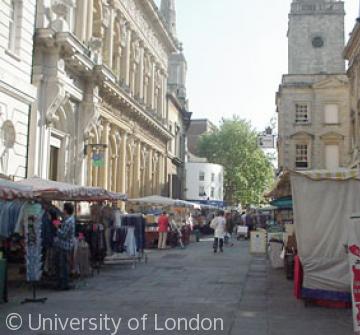Corn Street

Corn Street was the street where many merchants did business during the 1700s. They traded in cloth from India, butter, eggs and chickens from Wales, goods made from iron from the centre of England and slave produced goods from the Caribbean and North America such as sugar, tobacco, coffee and chocolate.
This meant more money came to Bristol and had to be administered. Loans were needed, slaving and cargo ships had to be insured, as did the sugar refineries and warehouses where fire was a constant threat. Goods had to be sold off and commission needed to be paid. In this way, financial services could be said to have been stimulated by the success of the triangular trade. By the mid-18th century, Corn Street became a focus for the city's banks, insurance offices and coffee houses.
The Corn Exchange was built in 1753 and replaced the open air trading area which merchants had used before.
Content generated during research for the paperback book 'Bristol: Ethnic Monorities and the City 1000-2001' (ISBN 13 : 978-1-86077-477-5 ) for the England's Past for Everyone series






